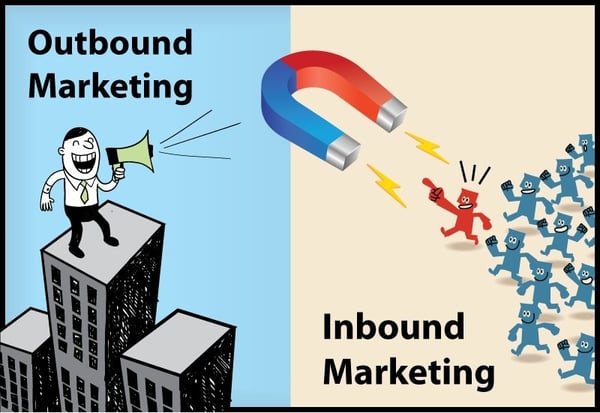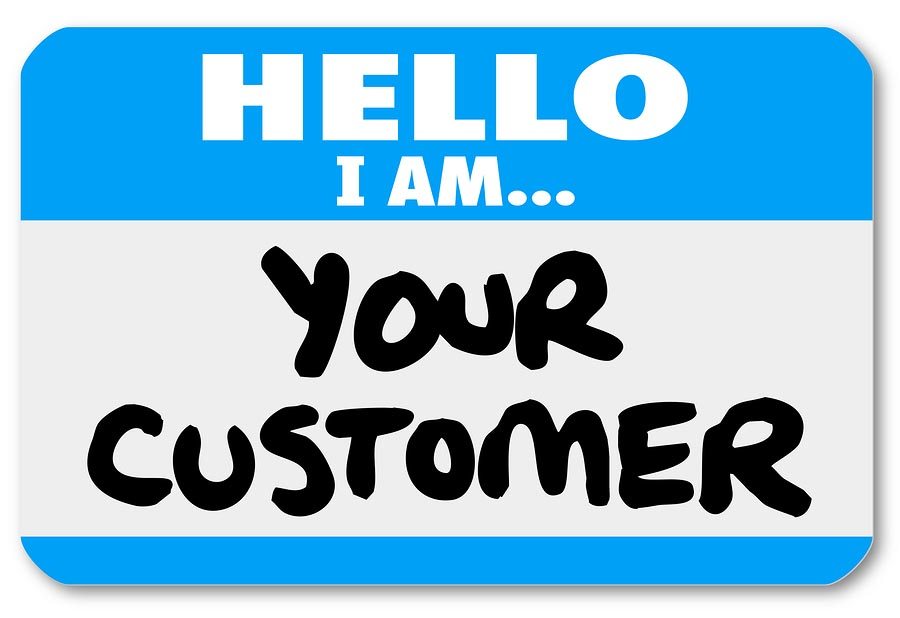Inbound Marketing Overview, Trends and Examples
The race to get clients on the internet continues to get more and more competitive. Companies still use pay per click and banner ads, but have now...
If you're new to HubSpot, we guide you on where to start, how to do it right, and train you to make the most of the platform.
Review your HubSpot portal to uncover issues, spot growth opportunities, and ensure you're maximising its potential.
Unlock business growth with automation and attribution. Implement best practices and execute marketing campaigns.
HubSpot On-Demand
HubSpot Training
HubSpot Websites
HubSpot Campaigns
Virtual HubSpot Manager
11 min read
![]() Solar Trust Centre Team
31 March 2016 1:41:22 PM
Solar Trust Centre Team
31 March 2016 1:41:22 PM
Most web users these days view advertisements as irritating distractions. While advertising is a big part of what many consider to be interruption marketing, or as many experts call it, outbound marketing. In simple terms, outbound marketing is the attempt to buy the attention of people to generate leads. It comes in many forms like texts, emails, billboards, spam, printed leaflets, trade shows or telemarketing. However, the rules of marketing have changed over the past few years. There are now more interesting and more innovative ways to get leads and conversions thanks to best practices of inbound marketing.
The term “inbound marketing” was first used by HubSpot founder Brian Halligan in 2005. The concept of inbound marketing states that you can attract customers and prospects naturally by providing quality and interesting content on a website or a blog site. While traditional advertising has ruled the marketing world for decades, now marketers and advertising experts are focusing on the world wide web to reach more people in a more personal and focused level. If the contents informs, educates, and engages directly with people using target buyer personas, it will serve in building awareness and increase the interest which will generate leads. Once a site visitor becomes a lead you can pass them into the sale funnel. After they convert and buy repeatedly, you will be able to analyse the process, allowing you to produce more desirable content and show your expertise.
If you’re an inbound marketer or a business planning to improve inbound marketing strategies to boost your business, you need to know what inbound marketing actually is. If you’re having trouble explaining or if the people are having a hard time understanding your explanation, you’re not alone. Concepts of inbound marketing can be confusing for many people to grasp, especially if they are new to search engine optimisation, social media marketing, automation or blogging or basically any type of digital marketing. If you want to make people understand what inbound marketing is and the tactics behind the concept, you have to explain it in more relatable terms.
Inbound marketing is a process or concept that is defined as promoting a company or a business through eBooks, social media marketing, search engine optimisation, videos, podcasts, white papers, newsletters and other types of digital marketing content that will serve in attracting potential customers to be closer to the brand or business. An inbound content marketing strategy should possess these important factors to be more effective:
Outbound marketing is the opposite of inbound marketing. It tries to reach consumers through traditional or general media advertising as well as person-to-person contact. Depending on the channel or venue used, the approach can be broad (for example TV advertising), personal (face-to-face meetings) or impersonal (cold-calling and blanket emails).
With the popularity of mobile and smart devices, many new and creative ways of advertising have been introduced. Outbound marketing has lost appeal because of the new marketing trends, but many companies are still continuing to dedicate up to 90% of their marketing budget to outbound marketing strategies. The goal of outbound marketing is lead generation, making it essential to many large businesses trying to gain customers. And for many companies, outbound marketing is often the way to reach the widest audience possible in the least amount of time.
One of the biggest differences between inbound and outbound is the use of blogging.
Blogging can be compared to jogging or dieting. You’ll get better results if you do a 30 minute jog every day and follow your diet plan than if you run in a marathon once a year. Results take time, patience, discipline and dedication. It goes the same with blogging, you don’t just create and upload content 3 days in a row and then give up when your site is not ranking or your site is not driving online traffic. Business blogging needs consistency and long term effort. You’ll have a higher chance of success blogging every other day for a year as compared to blogging twice a day for 3 weeks. stopping suddenly and then starting again a month later. You will also lose your momentum and interested readers.
 Image credit:
www.weidert.com
Image credit:
www.weidert.com
Applying keyword strategies is like applying for college. Approach your keyword selection just like you’re applying for college. There are some really good keywords that you would like to rank for but they are probably also quite competitive. You could put in some serious effort to rank for these high-popularity terms but you’re going to get faster returns if you also target some long-tail keywords in SEO. These terms can still provide you with good business results and they’re easier to rank for.
You can apply this metaphor to your SEO strategy. If you study hard and do your best while you’re in school, surely you will get into a great college or university. For SEO, if you create excellent and relevant content consistently, your persistence and hard work will result in having excellent rankings in your chosen keywords.
The conversion path is like catching an animal in the wild. Wildlife experts lure the animals in, capture them, tag them and then release them back into the wild to keep track of them. The conversion path is the process that turns web or blog site visitors into leads and customers. The stages of this conversion include the landing page, call-to-action, form submission and the thank you page. Let's break these down:
Marketing automation can be compared to flying business class. You can either choose to drive a car to the other side of your country and travel for 3-4 days or you could buy a ticket and travel in comfort and style in a business class flight and get to your destination in just 4 hours. Let's use email automaton as an example. You can spend a lot of time writing personalised email messages for everyone in your mailing list. How long will it take and will you have the patience to do it?
If you've done this you'll probably realise that you’re basically saying the same thing in every email with possibly a few exceptions. They’ve been segmented and they all have this one thing in common. So, instead of spending weeks sending out those individual emails, you can just segment the list of people using your marketing automation tool, then insert some dynamic fields on the content to make it more personal. After doing this, you can nurture the people who have responded. Everything is documented and recorded in your content relationship management tool.
HubSpot, the originator of the “inbound marketing” term defines it as the following:
“Inbound marketing focuses on creating quality content that pulls people to your product and your business, where they naturally want to be as compared to the old style of outbound marketing of buying ads, buying email lists and praying for leads to come.”
But still, as HubSpot has stated, they are worried that many industry people don’t understand the differences between inbound marketing and content marketing. By asking respondents, they found out that the majority of marketing and sales and service professionals think that content marketing is just a subset of inbound marketing. Yes, it does makes sense because inbound marketing is made up of different components and none of the number of these components is as important as content. According to Joe Chernov, content marketing is a subset of inbound marketing and without content, there will be no inbound marketing.
In 2015 alone, about 47% of shoppers first used a search engine in finding what they were looking for. These shoppers did not browse the newspaper or go through their spam folder, but went straight to Google. And the numbers will steadily increase because more people will be using their wireless smart devices to connect to the internet and do product searches. To capture your target audience, you need to have a website or a blog site that can be easily found. Also, a business must provide engaging and relevant content, optimised landing pages that can offer free downloads like white papers or e-books or podcasts and most importantly, should have a constant presence online. Other aspects of inbound marketing include:
Let’s get straight to the point. Traditional marketing is still an advantage for many businesses, but digital marketing will get you more mileage and will produce more personal connections with your customers. Below are seven effective steps to make your inbound marketing strategy a success.
This is one of the most challenging aspects of inbound marketing. For many companies, inbound marketing is a new way of marketing and it will take some time to truly understand the advantages and how it can change the way a company markets their products and themselves.
Your strategy should revolve around your business goals. With this, you can define the KPIs that will tell you about how your inbound marketing is doing. Under this, there are several factors that you need to consider:
Taking advantage of Customer Relationship Management integration will provide the sales team with the necessary information which will make them prepared for any sales calls. With the CRM system, you will be able to track every action a possible lead can do on your website, within email marketing and on social media. This will make sure your sales team is a step ahead.

Getting the customers and closing sales are the goals of the sales and marketing team, but your inbound marketing relationship with customers should not end there. Once you have established that trust with your customers, you can turn them into promoters of your business or products. Who are the best advocates of your business? The people that have a great experience with your brand. You can have referral programs providing loyalty rewards, continued customer education content and segmented customer newsletters in order to keep them up to date on what’s up and coming.
Use Google Analytics to run some simple reports on your website and mobile assets. Take the time to look at the reports presented so that you’ll know where you stand and from there, formulate your next inbound marketing strategy.
Doing a full analysis of your website is one essential thing you need to do. You can do this by looking at the performance of a specific keyword, rankings, SEO, blog performance, organic search engine traffic, page performance and other factors. Off-site analysis is another thing that you need to do. This is the analysis of your online presence away from your blog site or website. This includes your social media accounts, paid social campaigns and paid search campaigns.
 Image credit:
Business vector designed by Freepik
Image credit:
Business vector designed by Freepik
If you’re a startup, a small or medium sized company with little or no online experience, you can have a small investment in an online audit or a strategy consultant.
If you have already a clear picture of your company goals, you can repeat the optimisation and measurement steps until you reach your company goals. Take time to learn about online success and measurement so that you can make informed decisions. Use all the available tools that you have access to. These might include Big Data, EDM and intranets.
The race to get clients on the internet continues to get more and more competitive. Companies still use pay per click and banner ads, but have now...
The modern customer is changing, which means that companies have to change their marketing methods to remain relevant. Disruptive, outbound marketing...
Wouldn’t you agree that it’s better to draw your customers to you, pulling them in rather than chasing them around attempting to pitch your business...